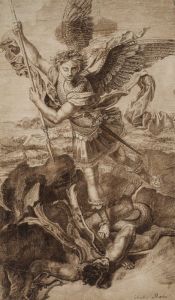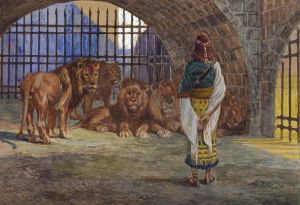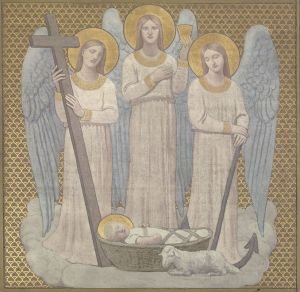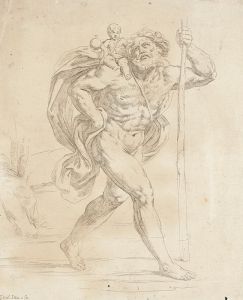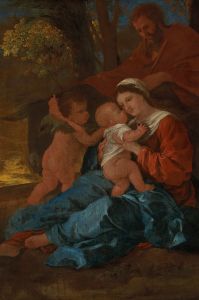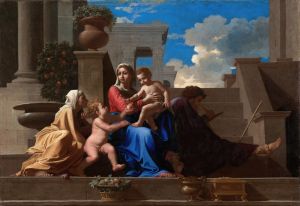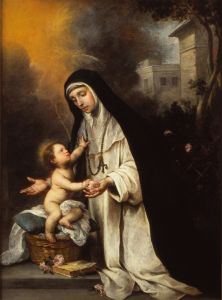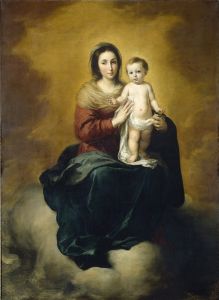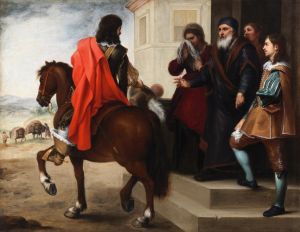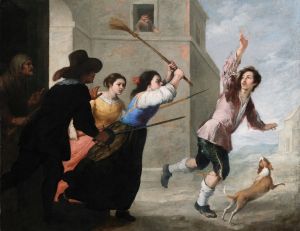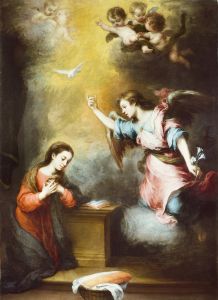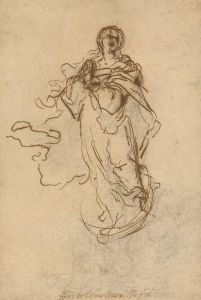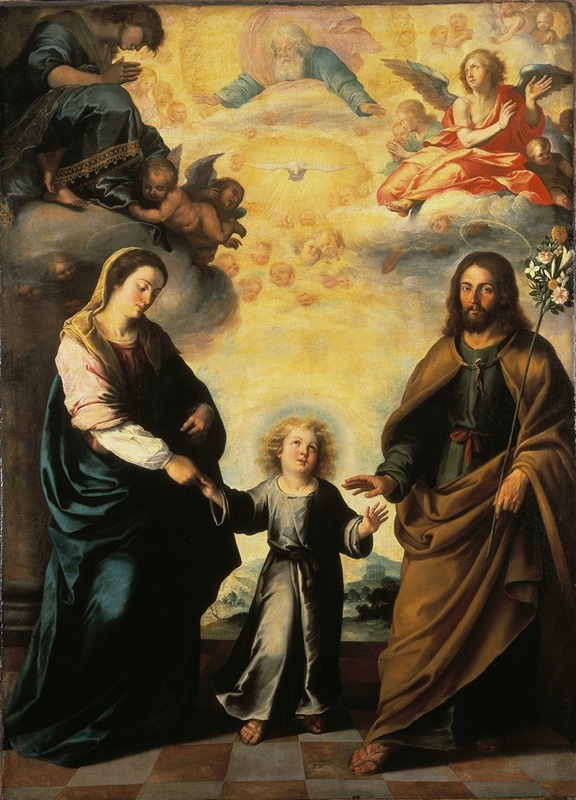
The Return of the Holy Family from Egypt
A hand-painted replica of Bartolomé Estebán Murillo’s masterpiece The Return of the Holy Family from Egypt, meticulously crafted by professional artists to capture the true essence of the original. Each piece is created with museum-quality canvas and rare mineral pigments, carefully painted by experienced artists with delicate brushstrokes and rich, layered colors to perfectly recreate the texture of the original artwork. Unlike machine-printed reproductions, this hand-painted version brings the painting to life, infused with the artist’s emotions and skill in every stroke. Whether for personal collection or home decoration, it instantly elevates the artistic atmosphere of any space.
"The Return of the Holy Family from Egypt" is a painting by the renowned Spanish Baroque artist Bartolomé Estebán Murillo. Murillo, born in 1617 in Seville, is celebrated for his religious works, genre scenes, and portraits, which are characterized by their warmth, realism, and delicate use of light. This particular painting is one of his many depictions of religious themes, reflecting his deep Catholic faith and the Counter-Reformation's emphasis on religious art.
The painting illustrates the biblical episode of the Holy Family's return from Egypt, as recounted in the Gospel of Matthew (Matthew 2:19-23). According to the narrative, after the death of King Herod, an angel appeared to Joseph in a dream, instructing him to return to the land of Israel with Mary and the infant Jesus. This event is significant in Christian theology as it marks the end of the Holy Family's flight into Egypt, where they had sought refuge from Herod's massacre of the innocents.
Murillo's depiction of this scene is imbued with his characteristic tenderness and humanity. The composition typically features the Virgin Mary, Saint Joseph, and the young Jesus, often accompanied by a donkey, symbolizing their journey. Murillo's use of light and color enhances the serene and intimate atmosphere of the scene, emphasizing the sanctity and humility of the Holy Family. The figures are rendered with a naturalism that invites viewers to connect emotionally with the sacred narrative.
The painting is notable for its soft, luminous quality, achieved through Murillo's masterful handling of light and shadow. This technique, known as chiaroscuro, helps to create a sense of depth and volume, bringing the figures to life. Murillo's palette is typically warm and harmonious, with gentle transitions between colors that contribute to the overall sense of peace and divine grace.
Murillo's works, including "The Return of the Holy Family from Egypt," were highly esteemed during his lifetime and continue to be celebrated for their devotional intensity and artistic excellence. His paintings were sought after by both religious institutions and private collectors, and he enjoyed considerable success and recognition. Today, Murillo's works can be found in major museums and collections around the world, where they continue to inspire and move audiences with their beauty and spiritual depth.
"The Return of the Holy Family from Egypt" exemplifies Murillo's ability to convey profound religious themes with warmth and accessibility, making the divine approachable and relatable. His legacy as one of Spain's greatest painters endures, and his contributions to the Baroque period remain influential in the history of art.





